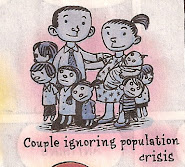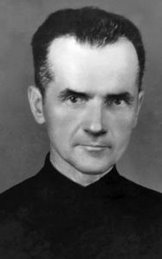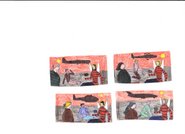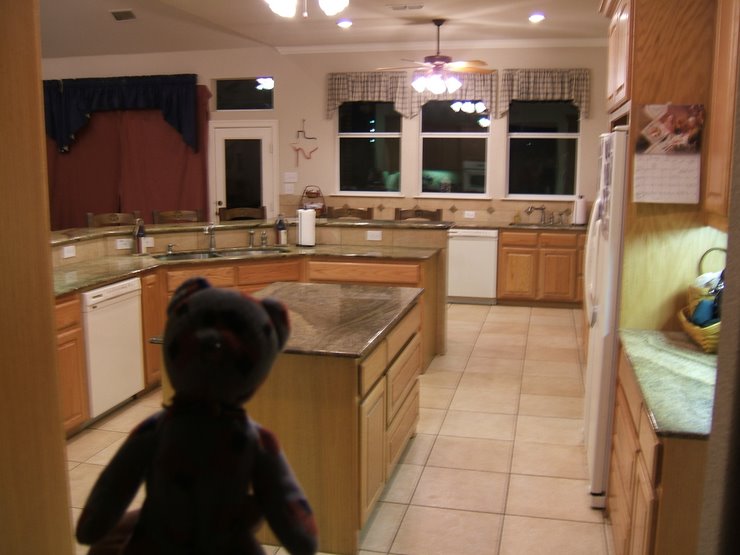
Imagine if you shot your dog, intending to kill it, and it did not die. Then imagine that when it lived you celebrated its life - ignoring the fact that you tried to shoot it.
Forget about imagining. Forget about dogs:
Here is the link, but I recommend reading the story below instead - too many distractions for men on the sidebar:
We're twinseparable! Happy with his brother, the boy who refused to die
By LUCY LAING
They say twins share a strong bond - but the one between Gabriel and Ieuan Jones was unbreakable. NOTE: GABRIEL IS ON THE RIGHT IN THE PICTURE ABOVE.
When doctors found that Gabriel was weaker than his brother, with an enlarged heart,and believed he was going to die in the womb, his mother Rebecca Jones had to make a heartbreaking decision.
Doctors told her his death could cause his twin brother to die too before they were born, and that it would be better to end Gabriel's suffering sooner rather than later.
Mrs Jones decided to let doctors operate to terminate Gabriel's life.
Firstly they tried to sever his umbilical cord to cut off his blood supply, but the cord was too strong.
They then cut Mrs Jones's placenta in half so that when Gabriel died, it would not affect his twin brother.
But after the operation which was meant to end his life, tiny Gabriel had other ideas.
Although he weighed less than a pound, he put up such a fight for survival that doctors called him Rocky.
Astonishingly, he managed to carry on living in his mother's womb for another five weeks - until the babies were delivered by caesarean section.
Now he and Ieuan are back at home in Stoke - and are so close they are always holding each other's hand.
Mrs Jones, 35, a financial adviser whose husband Mark, 36, is a car salesman, said: "It really is a miracle. Doctors carried out an operation to let Gabriel die - yet he hung on.
"It was unbelievable."
"When I felt him kicking madly the morning after the operation, I suddenly knew that he was going to hang on.
"The doctors couldn't believe it when they could still hear his heartbeat the next morning."
Rebecca Jones: 'It's a miracle'
Mrs Jones learned she was expecting twins when she was ten weeks pregnant. She said: "When they told us we were over the moon."
But at her 20-week scan, doctors had some devastating news. One of the boys was half the size of his brother.
They didn't know what was causing it, but somehow he wasn't getting enough nutrients.
Then doctors said his heart was three times normal size and it was likely he would have a heart attack or a stroke in the womb.
Mrs Jones said: "They told us that if he died, it could be life threatening for his brother.
"We had to decide whether to end his life and let his brother live, or risk them both."
They said it would be impossible to keep him alive afterwards as he was so poorly.
It would be kinder to let him die in the womb with his brother by his side than to die alone after being born.
"That made my mind up for me. I wanted the best thing for him."
At Birmingham Women's Hospital, when Mrs Jones was 25 weeks pregnant, doctors tried to sever Gabriel's umbilical cord to cut off his blood supply and allow him to die.
But the cord was too thick, and they could not cut through it.
As a last resort they divided Mrs Jones's placenta so that when Gabriel died, it would allow Ieuan to survive. Mrs Jones said: "I put my hands on my stomach thinking of Gabriel. It was devastating. I had said my goodbyes."
But the next morning Mrs Jones felt Gabriel kicking. A scan showed his heart was still beating. She said: "No one could quite believe it."
Gabriel hung on, and his enlarged heart started to reduce in size. He also gained weight.
Mrs Jones said: "They thought it may be because the placenta had been divided. Inadvertently, it had evened out the distribution of nutrition between them, allowing Gabriel to survive.'
When Mrs Jones reached 31 weeks doctors carried out a caesarian to deliver the twins. Ieuan weighed 3lb 8oz and Gabriel 1lb 15oz. Both were kept in hospital, but since going home they have thrived. At seven months, Ieuan weighs 15lb and Gabriel 12lb 6oz.
Mrs Jones said: "The boys are so healthy, they have huge appetites too. Ieuan is the noisy one, while Gabriel is always laughing, it's like he's just so happy to be here.
"There is such a strong bond between them.
"They are always holding hands and if one cries, the other reaches out to comfort him."
"Doctors tried to break their bond in the womb, but they just proved it couldn't be broken."
Forget about imagining. Forget about dogs:
Here is the link, but I recommend reading the story below instead - too many distractions for men on the sidebar:
We're twinseparable! Happy with his brother, the boy who refused to die
By LUCY LAING
They say twins share a strong bond - but the one between Gabriel and Ieuan Jones was unbreakable. NOTE: GABRIEL IS ON THE RIGHT IN THE PICTURE ABOVE.
When doctors found that Gabriel was weaker than his brother, with an enlarged heart,and believed he was going to die in the womb, his mother Rebecca Jones had to make a heartbreaking decision.
Doctors told her his death could cause his twin brother to die too before they were born, and that it would be better to end Gabriel's suffering sooner rather than later.
Mrs Jones decided to let doctors operate to terminate Gabriel's life.
Firstly they tried to sever his umbilical cord to cut off his blood supply, but the cord was too strong.
They then cut Mrs Jones's placenta in half so that when Gabriel died, it would not affect his twin brother.
But after the operation which was meant to end his life, tiny Gabriel had other ideas.
Although he weighed less than a pound, he put up such a fight for survival that doctors called him Rocky.
Astonishingly, he managed to carry on living in his mother's womb for another five weeks - until the babies were delivered by caesarean section.
Now he and Ieuan are back at home in Stoke - and are so close they are always holding each other's hand.
Mrs Jones, 35, a financial adviser whose husband Mark, 36, is a car salesman, said: "It really is a miracle. Doctors carried out an operation to let Gabriel die - yet he hung on.
"It was unbelievable."
"When I felt him kicking madly the morning after the operation, I suddenly knew that he was going to hang on.
"The doctors couldn't believe it when they could still hear his heartbeat the next morning."
Rebecca Jones: 'It's a miracle'
Mrs Jones learned she was expecting twins when she was ten weeks pregnant. She said: "When they told us we were over the moon."
But at her 20-week scan, doctors had some devastating news. One of the boys was half the size of his brother.
They didn't know what was causing it, but somehow he wasn't getting enough nutrients.
Then doctors said his heart was three times normal size and it was likely he would have a heart attack or a stroke in the womb.
Mrs Jones said: "They told us that if he died, it could be life threatening for his brother.
"We had to decide whether to end his life and let his brother live, or risk them both."
They said it would be impossible to keep him alive afterwards as he was so poorly.
It would be kinder to let him die in the womb with his brother by his side than to die alone after being born.
"That made my mind up for me. I wanted the best thing for him."
At Birmingham Women's Hospital, when Mrs Jones was 25 weeks pregnant, doctors tried to sever Gabriel's umbilical cord to cut off his blood supply and allow him to die.
But the cord was too thick, and they could not cut through it.
As a last resort they divided Mrs Jones's placenta so that when Gabriel died, it would allow Ieuan to survive. Mrs Jones said: "I put my hands on my stomach thinking of Gabriel. It was devastating. I had said my goodbyes."
But the next morning Mrs Jones felt Gabriel kicking. A scan showed his heart was still beating. She said: "No one could quite believe it."
Gabriel hung on, and his enlarged heart started to reduce in size. He also gained weight.
Mrs Jones said: "They thought it may be because the placenta had been divided. Inadvertently, it had evened out the distribution of nutrition between them, allowing Gabriel to survive.'
When Mrs Jones reached 31 weeks doctors carried out a caesarian to deliver the twins. Ieuan weighed 3lb 8oz and Gabriel 1lb 15oz. Both were kept in hospital, but since going home they have thrived. At seven months, Ieuan weighs 15lb and Gabriel 12lb 6oz.
Mrs Jones said: "The boys are so healthy, they have huge appetites too. Ieuan is the noisy one, while Gabriel is always laughing, it's like he's just so happy to be here.
"There is such a strong bond between them.
"They are always holding hands and if one cries, the other reaches out to comfort him."
"Doctors tried to break their bond in the womb, but they just proved it couldn't be broken."
Commentary: It appears as if the parent is downplaying the fact that she wanted her infant killed. Dying in the womb next to one's twin or after birth results in the same thing: a dead baby. Perhaps they regret what they have done, but the article does not give any indication of this.
This was probably a case of twin-twin transfusion, where one baby was acting as the 'pump' for both of them. It seems as if this could be used as a means to treat twin-twin transfusions.
Since I seem to be on a medical journal rant at present, read this article which demonstrates how evidence based medicine does not work in some cases. In this case, the study was about parachutes:
HERE IS THE LINK. This sidebar is less distracting for men.
Here is the article:
Parachute use to prevent death and major trauma related to gravitational challenge: systematic review of randomised controlled trials
Gordon C S Smith, professor1, Jill P Pell, consultant2
1 Department of Obstetrics and Gynaecology, Cambridge University, Cambridge CB2 2QQ, 2 Department of Public Health, Greater Glasgow NHS Board, Glasgow G3 8YU
Correspondence to: G C S Smith gcss2@cam.ac.uk
Abstract
Objectives: To determine whether parachutes are effective in preventing major trauma related to gravitational challenge.
Design: Systematic review of randomised controlled trials.
Data sources: Medline, Web of Science, Embase, and the Cochrane Library databases; appropriate internet sites and citation lists.
Study selection: Studies showing the effects of using a parachute during free fall.
Main outcome measure: Death or major trauma, defined as an injury severity score > 15.
Results: We were unable to identify any randomised controlled trials of parachute intervention.
Conclusions: As with many interventions intended to prevent ill health, the effectiveness of parachutes has not been subjected to rigorous evaluation by using randomised controlled trials. Advocates of evidence based medicine have criticised the adoption of interventions evaluated by using only observational data. We think that everyone might benefit if the most radical protagonists of evidence based medicine organised and participated in a double blind, randomised, placebo controlled, crossover trial of the parachute.
Introduction
The parachute is used in recreational, voluntary sector, and military settings to reduce the risk of orthopaedic, head, and soft tissue injury after gravitational challenge, typically in the context of jumping from an aircraft. The perception that parachutes are a successful intervention is based largely on anecdotal evidence. Observational data have shown that their use is associated with morbidity and mortality, due to both failure of the intervention1 2 and iatrogenic complications.3 In addition, "natural history" studies of free fall indicate that failure to take or deploy a parachute does not inevitably result in an adverse outcome.4 We therefore undertook a systematic review of randomised controlled trials of parachutes.
Methods
Literature search: We conducted the review in accordance with the QUOROM (quality of reporting of meta-analyses) guidelines.5 We searched for randomised controlled trials of parachute use on Medline, Web of Science, Embase, the Cochrane Library, appropriate internet sites, and citation lists. Search words employed were "parachute" and "trial." We imposed no language restriction and included any studies that entailed jumping from a height greater than 100 metres. The accepted intervention was a fabric device, secured by strings to a harness worn by the participant and released (either automatically or manually) during free fall with the purpose of limiting the rate of descent. We excluded studies that had no control group.
Definition of outcomes: The major outcomes studied were death or major trauma, defined as an injury severity score greater than 15.6
Meta-analysis: Our statistical apprach was to assess outcomes in parachute and control groups by odds ratios and quantified the precision of estimates by 95% confidence intervals. We chose the Mantel-Haenszel test to assess heterogeneity, and sensitivity and subgroup analyses and fixed effects weighted regression techniques to explore causes of heterogeneity. We selected a funnel plot to assess publication bias visually and Egger's and Begg's tests to test it quantitatively. Stata software, version 7.0, was the tool for all statistical analyses.
Results
Evidence based pride and observational prejudiceIt is a truth universally acknowledged that a medical intervention justified by observational data must be in want of verification through a randomised controlled trial. Observational studies have been tainted by accusations of data dredging, confounding, and bias.7 For example, observational studies showed lower rates of ischaemic heart disease among women using hormone replacement therapy, and these data were interpreted as advocating hormone replacement for healthy women, women with established ischaemic heart disease, and women with risk factors for ischaemic heart disease.8 However, randomised controlled trials showed that hormone replacement therapy actually increased the risk of ischaemic heart disease,9 indicating that the apparent protective effects seen in observational studies were due to bias. Cases such as this one show that medical interventions based solely on observational data should be carefully scrutinised, and the parachute is no exception.
Natural history of gravitational challenge: The effectiveness of an intervention has to be judged relative to non-intervention. Understanding the natural history of free fall is therefore imperative. If failure to use a parachute were associated with 100% mortality then any survival associated with its use might be considered evidence of effectiveness. However, an adverse outcome after free fall is by no means inevitable. Survival has been reported after gravitation challenges of more than 10 000 metres (33 000 feet).4 In addition, the use of parachutes is itself associated with morbidity and mortality.1-3 10 This is in part due to failure of the intervention. However, as with all interventions, parachutes are also associated with iatrogenic complications.3 Therefore, studies are required to calculate the balance of risks and benefits of parachute use.
The parachute and the healthy cohort effect: One of the major weaknesses of observational data is the possibility of bias, including selection bias and reporting bias, which can be obviated largely by using randomised controlled trials. The relevance to parachute use is that individuals jumping from aircraft without the help of a parachute are likely to have a high prevalence of pre-existing psychiatric morbidity. Individuals who use parachutes are likely to have less psychiatric morbidity and may also differ in key demographic factors, such as income and cigarette use. It follows, therefore, that the apparent protective effect of parachutes may be merely an example of the "healthy cohort" effect. Observational studies typically use multivariate analytical approaches, using maximum likelihood based modelling methods to try to adjust estimates of relative risk for these biases. Distasteful as these statistical adjustments are for the cognoscenti of evidence based medicine, no such analyses exist for assessing the presumed effects of the parachute.
The medicalisation of free fall: It is often said that doctors are interfering monsters obsessed with disease and power, who will not be satisfied until they control every aspect of our lives (Journal of Social Science, pick a volume). It might be argued that the pressure exerted on individuals to use parachutes is yet another example of a natural, life enhancing experience being turned into a situation of fear and dependency. The widespread use of the parachute may just be another example of doctors' obsession with disease prevention and their misplaced belief in unproved technology to provide effective protection against occasional adverse events.
What is already known about this topic
1. Parachutes are widely used to prevent death and major injury after gravitational challenge
2. Parachute use is associated with adverse effects due to failure of the intervention and iatrogenic injury
3. Studies of free fall do not show 100% mortality
What this study adds
1. No randomised controlled trials of parachute use have been undertaken
2. The basis for parachute use is purely observational, and its apparent efficacy could potentially be explained by a "healthy cohort" effect
3. Individuals who insist that all interventions need to be validated by a randomised controlled trial need to come down to earth with a bump
Parachutes and the military industrial complex: However sinister doctors may be, there are powers at large that are even more evil. The parachute industry has earned billions of dollars for vast multinational corporations whose profits depend on belief in the efficacy of their product. One would hardly expect these vast commercial concerns to have the bravery to test their product in the setting of a randomised controlled trial. Moreover, industry sponsored trials are more likely to conclude in favour of their commercial product,11 and it is unclear whether the results of such industry sponsored trials are reliable.
A call to (broken) arms: Only two options exist. The first is that we accept that, under exceptional circumstances, common sense might be applied when considering the potential risks and benefits of interventions. The second is that we continue our quest for the holy grail of exclusively evidence based interventions and preclude parachute use outside the context of a properly conducted trial. The dependency we have created in our population may make recruitment of the unenlightened masses to such a trial difficult. If so, we feel assured that those who advocate evidence based medicine and criticise use of interventions that lack an evidence base will not hesitate to demonstrate their commitment by volunteering for a double blind, randomised, placebo controlled, crossover trial.
Contributors: GCSS had the original idea. JPP tried to talk him out of it. JPP did the first literature search but GCSS lost it. GCSS drafted the manuscript but JPP deleted all the best jokes. GCSS is the guarantor, and JPP says it serves him right.
Ethical approval: Not required.
References
Belmont PJ Jr, Taylor KF, Mason KT, Shawen SB, Polly DW Jr, Klemme WR. Incidence, epidemiology, and occupational outcomes of thoracolumbar fractures among US Army aviators. J Trauma 2001;50: 855-61.[ISI][Medline]
Belmont PJ Jr, Taylor KF, Mason KT, Shawen SB, Polly DW Jr, Klemme WR. Incidence, epidemiology, and occupational outcomes of thoracolumbar fractures among US Army aviators. J Trauma 2001;50: 855-61.[ISI][Medline]
Bricknell MC, Craig SC. Military parachuting injuries: a literature review. Occup Med (Lond) 1999;49: 17-26.
Lasczkowski G, Hasenfuss S, Verhoff M, Weiler G. An unusual airplane crash—deadly life saver. Unintentional activation of an automated reserve opening device causing airplane accident. Forensic Sci Int 2002;125: 250-3.[CrossRef][ISI][Medline]
Highest fall survived without a parachute. In: Cunningham A. Guinness world records 2002. London: Guinness World Records, 2002.
Moher D, Cook DJ, Eastwood S, Olkin I, Rennie D, Stroup DF, for the QUOROM Group. Improving the quality of reports of meta-analyses of randomised controlled trials: the QUOROM statement. Lancet 1999;354: 1896-1900.[CrossRef][ISI][Medline]
Lossius HM, Langhelle A, Reide E, Pillgram-Larsen J, Lossius TA, Laake P, et al. Reporting data following major trauma and analysing factors associated with outcome using the new Utstein style recommendations. Resuscitation 2001;50: 263-72.[CrossRef][ISI][Medline]
Davey Smith G, Ebrahim S. Data dredging, bias, or confounding. BMJ 2002;325: 1437-8.[Free Full Text]
Pines A, Mijatovic V, van der Mooren MJ, Kenemans P. Hormone replacement therapy and cardioprotection: basic concepts and clinical considerations. Eur J Obstet Gynecol Reprod Biol 1997;71: 193-7.[CrossRef][ISI][Medline]
Rossouw JE, Anderson GL, Prentice RL, LaCroix AZ, Kooperberg C, Stefanick ML, et al. Risks and benefits of estrogen plus progestin in healthy postmenopausal women: principal results from the Women's Health Initiative randomized controlled trial. JAMA 2002;288: 321-33.[Abstract/Free Full Text]
Lee CT, Williams P, Hadden WA. Parachuting for charity: is it worth the money? A 5-year audit of parachute injuries in Tayside and the cost to the NHS. Injury 1999;30: 283-7.[CrossRef][ISI][Medline]
Lexchin J, Bero LA, Djulbegovic B, Clark O. Pharmaceutical industry sponsorship and research outcome and quality: systematic review. BMJ 2003;326: 1167-70.[Abstract/Free Full Text]


















1 comment:
Yeah i read that post about the babies..the mother just doesn't get it..that she tried to kill her son..in other circumstances the child would be taken off a mother that did that..
Post a Comment